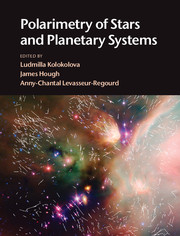III - Stars and their environment
Published online by Cambridge University Press: 05 May 2015
Summary

- Type
- Chapter
- Information
- Polarimetry of Stars and Planetary Systems , pp. 145 - 264Publisher: Cambridge University PressPrint publication year: 2015

